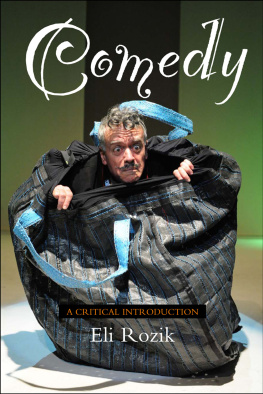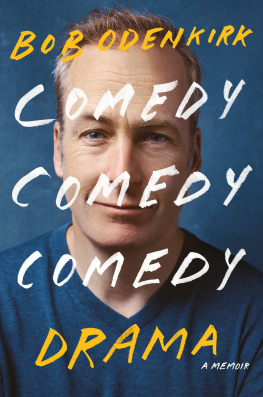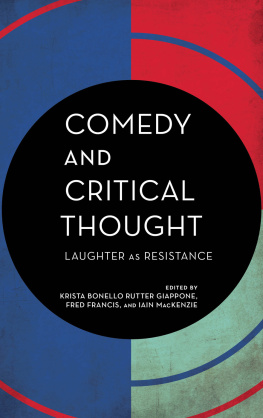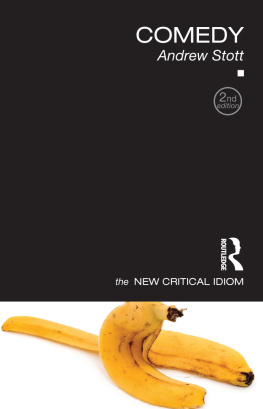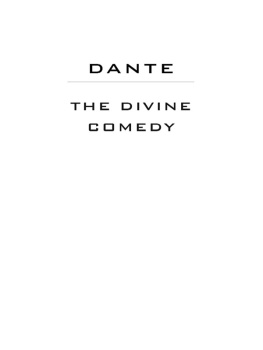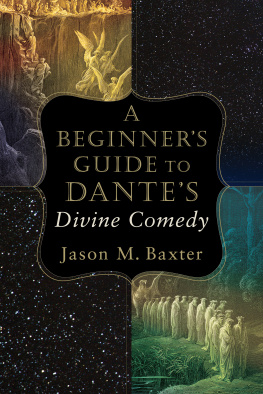Eli Rozik - Comedy A Critical Introduction
Here you can read online Eli Rozik - Comedy A Critical Introduction full text of the book (entire story) in english for free. Download pdf and epub, get meaning, cover and reviews about this ebook. year: 2021, publisher: Sussex Academic Press, genre: Science. Description of the work, (preface) as well as reviews are available. Best literature library LitArk.com created for fans of good reading and offers a wide selection of genres:
Romance novel
Science fiction
Adventure
Detective
Science
History
Home and family
Prose
Art
Politics
Computer
Non-fiction
Religion
Business
Children
Humor
Choose a favorite category and find really read worthwhile books. Enjoy immersion in the world of imagination, feel the emotions of the characters or learn something new for yourself, make an fascinating discovery.
Comedy A Critical Introduction: summary, description and annotation
We offer to read an annotation, description, summary or preface (depends on what the author of the book "Comedy A Critical Introduction" wrote himself). If you haven't found the necessary information about the book — write in the comments, we will try to find it.
Comedy A Critical Introduction — read online for free the complete book (whole text) full work
Below is the text of the book, divided by pages. System saving the place of the last page read, allows you to conveniently read the book "Comedy A Critical Introduction" online for free, without having to search again every time where you left off. Put a bookmark, and you can go to the page where you finished reading at any time.
Font size:
Interval:
Bookmark:

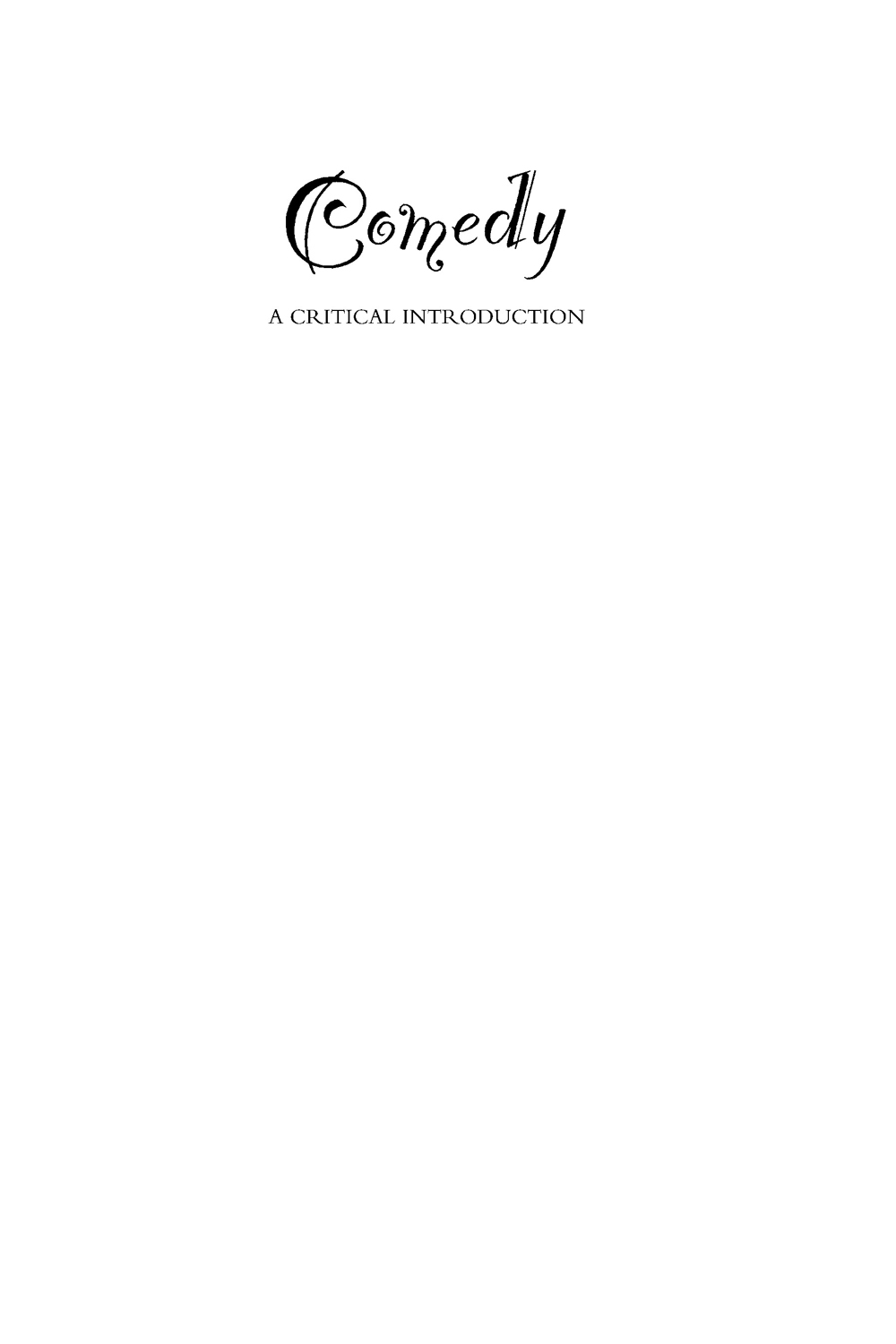
To Atara,
with immense love
and profound admiration
for her keen intellect and humane wisdom.

Copyright Eli Rozik, 2011.
Published in the Sussex Academic e-Library, 2019.
SUSSEX ACADEMIC PRESS
PO Box 139, Eastbourne BN24 9BP, UK
Ebook editions distributed worldwide by
Independent Publishers Group (IPG)
814 N. Franklin Street
Chicago, IL 60610, USA
ISBN 9781845194772 (Hardback)
ISBN 9781845194789 (Paperback)
ISBN 9781782847274 (Epub)
ISBN 9781782847274 (Kindle)
ISBN 9781782847274 (Pdf)
All rights reserved. Except for the quotation of short passages for the purposes of criticism and review, no part of this publication may be reproduced, stored in a retrieval system, or transmitted, in any form or by any means, electronic, mechanical, photocopying, recording or otherwise, without the prior permission of the publisher.
British Library Cataloguing in Publication Data
A CIP catalogue record for this book is available from the British Library.
This e-book text has been prepared for electronic viewing. Some features, including tables and figures, might not display as in the print version, due to electronic conversion limitations and/or copyright strictures.
Contents
Preface and
Acknowledgments
This book offers an introduction to a theory of comedy in any language or medium. While focusing on the analysis of this genre in theatre, which is my own main field of research, it considers its conclusions to be valid for all the media capable of describing comic fictional worlds, including, for example, opera, painting/drawing, animation, puppet theatre and cinema.
A critique of all theories of comedy is presented from Aristotle to the present day. Critique is understood here as either rejecting or accepting theses on the grounds of evidence. Indeed, in contrast to most theories of comedy, which are deductive in nature, this study adopts an inductive approach, whose generalizations are supported by a broad-based reading and analysis of extant play-scripts and by experience and analysis of performance-texts. Furthermore, it applies findings regarding both the nature of the theatre medium and the nature of fictional thinking and creativity, for which I refer the readers to my previous books Generating Theatre Meaning A Theory and Methodology of Performance Analysis (2008), and Fictional Thinking A Poetics and Rhetoric of Fictional Creativity in Theatre (2009), both published by Sussex Academic Press .
I have taken into consideration major contributions to a general theory of comedy and to a sound methodology for the analysis of comedies, which are presented as faithfully as possible, even if criticized. Ample quotation is provided to enable readers to grasp ideas in their original terminology and own logic thus allowing an independent opinion. Each presentation is accompanied by critical comments, which attempt both to introduce the problems involved and suggest possible solutions.
The text reflects the format of a university course, and has been purposefully designed not only to address undergraduate and postgraduate students, university teachers, scholars of theatre studies, and theatre practitioners, but also all those with a deep interest in fictional creativity and theatre art.
The theoretical chapters are amply illustrated by references to comedies and/or pertinent analyses of such comedies, written over the course of 2,500 years of theatre recorded history, and which should be seen as a minimal reading list for the keen student of theatre.
I am profoundly grateful to my wife Atara for her fervent and loving support and to Naomi Paz for her careful and enlightening English editing of this book.
Introduction
In the last hundred years the notion of comedy has attracted substantial theoretical attention, probably due to the increased popularity of satiric drama in democratic regimes and the creation of grotesque drama, with their broad use of laughter-eliciting devices for addressing deadly serious matters. It is sensible to assume, therefore, that for the same reasons comedy has climbed to the top of the hierarchy of genres, together with tragedy, and that, therefore, the determination of its nature has became extremely problematic. Indeed, the current application of comedy ranges from the unbridled nature of farce to the romantic atmosphere of Shakespearean comedy; from humorous narratives to satiric and even grotesque ones; and from literary fiction to cinema; not to mention obvious misapplications of this generic term. Currently, the problem lies in that, when reading theoretical works on comedy, it is not always clear as to which kind of comedy they relate and take as their paradigmatic model. The only sensible conclusion is, therefore, that what is usually termed comedy applies to a heterogeneous set of loosely-related works whose only common denominator is their use of laughter-eliciting devices, albeit reflecting different moods and aiming at different effects. This fundamental heterogeneity indicates the need for subtler generic distinctions and a richer terminology.
Basic observations
Let us begin with several fundamental observations: First, according to Northrop Fryes distinction, comedy belongs in the class of works of art by means of which authors express themselves not through a thematic mode or, rather, a discursive verbal description (pp. 5267 & 367), e.g., poetry; but through a fictional mode, i.e., through the mediation of a world of characters and their actions (pp. 3352 & 365), e.g., theatre, comics and cinematic comedy. In other words, the fictional mode is the expression of a single psyche through a multiple world of characters and their actions. Under the assumption that a fictional world, like a poem, is a self-referential description of the authors psychical state of affairs, it follows that such a world reflects the multi-personification of a single psyche, which is spontaneously partitioned and represented by different characters. These principles also apply to the spectators who adopt a description of a fictional world as an expression of themselves. I believe that Fryes distinction reflects a valuable insight, despite thematic being employed in such an unusual and unjustified sense: fictional worlds too are thematic in nature. I would prefer: fictional vs. non-fictional.
In contrast to Frye, who defines fictional as a basic mode of representation and expression of the psyche, Bruce Wilshire defines it in a generic sense to refer to all works of fine art in respect to their being embodied by beings which have a reality distinct from whatever actual things or inactual things are depicted by them (p. 28). Similarly, Patrice Pavis defines fiction as a [t]ype of discourse that refers to people and things that exist only in the imagination of their author, then in that of the reader/spectator (p. 149). Both Wilshire and Pavis stress the imaginative nature of fictional worlds, which, assumedly, reveal a mode of existence ontologically different from that attributed to the real world. In principle, these definitions complement that of Frye, while focusing on one of its implied aspects.
However, although basically true, Wilshires and Pavis definitions are deficient in a crucial respect. They imply that narratives such as those of Isaac (Old Testament), Jesus (New Testament), and Macbeth (Holinshed), who are perceived as historical personae in the Bible and Holinshed, have nothing to do with fictionality. Nonetheless, these narratives should be included on the grounds of fictionalization, meaning that these worlds reflect their being processed through the principles that characterize the fictional mode of thinking (Rozik, 2009). It is this processing that transmutes the narrations of historical events and people, at least partially, into fictional ones. Similar considerations apply to mythical characters such as Oedipus, Clytemnestra and Medea, and to pagan gods such as Aphrodite, Artemis and Dionysus, who were believed to enjoy real existence either in the remote past of the nation or in a different existential sphere.
Font size:
Interval:
Bookmark:
Similar books «Comedy A Critical Introduction»
Look at similar books to Comedy A Critical Introduction. We have selected literature similar in name and meaning in the hope of providing readers with more options to find new, interesting, not yet read works.
Discussion, reviews of the book Comedy A Critical Introduction and just readers' own opinions. Leave your comments, write what you think about the work, its meaning or the main characters. Specify what exactly you liked and what you didn't like, and why you think so.

